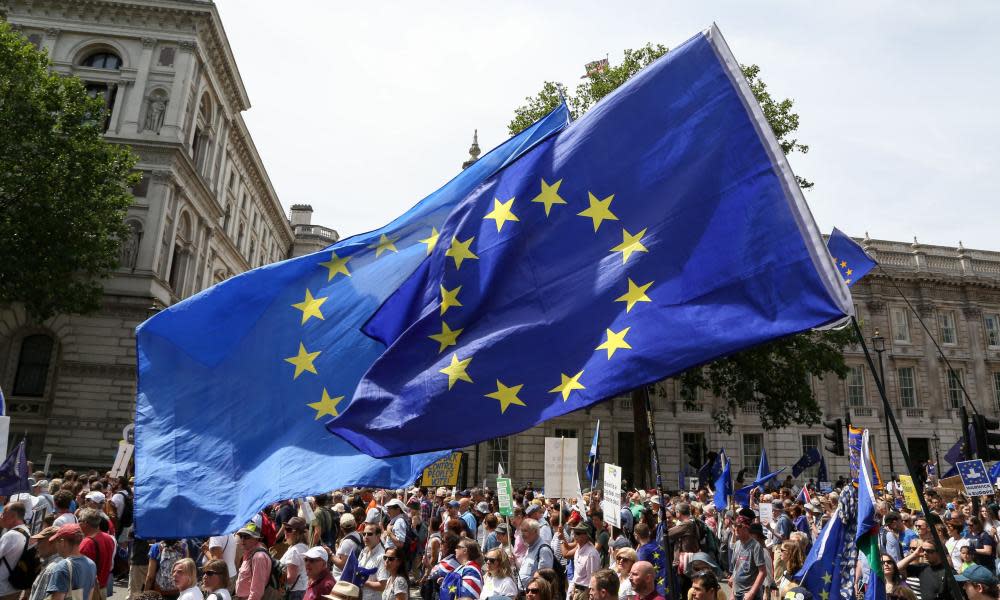A people’s vote on Brexit was a distant hope. Last week changed that

In the generally dismal year of 2018, one of the most cheering spectacles has been the transformation of the People’s Vote movement from a campaign that could plausibly be presented as the liberal elite demanding its job back, to a grassroots insurgency driven by young people that rallied 700,000 people on to the streets of London in October.
Its true faces are not political figures from the past, but tribunes of the future like Femi Oluwole, Lara Spirit and Will Dry. To quote that astute political observer Mr Zimmerman: “Your old road is/ Rapidly agin’ / Please get out of the new one / If you can’t lend your hand.”
It would be a serious exaggeration to say that Westminster has embraced this generational moment – but it is undeniable that the notion of a fresh referendum has moved, in the past 12 months, from the periphery of political discourse to the point where it is being seriously discussed in No 10. In response to a Sunday Times report that he was preparing for such a vote, Gavin Barwell, the prime minister’s chief of staff, tweeted this morning that he did not “want” and was not “planning” a second referendum – not quite an absolute denial, I would suggest.
David Lidington, Theresa May’s de facto deputy, is also said to be in talks with Labour MPs on how to break the impasse. He and his fellow cabinet members Amber Rudd, Philip Hammond, David Gauke and Greg Clark, are certainly open to the idea of second referendum. I am cautious when any such groupings are instantly characterised as a disciplined caucus – in this case the “gang of five” – since the alignments in this extraordinary constitutional crisis are constantly changing, not least as individual cabinet ministers weigh up their leadership prospects: one might call it agenda fluidity.
The point, however, is that senior Tories are now discussing the option of a people’s vote. Their change of heart is not driven by principle or enthusiasm – none of them wants to go through the root-canal treatment of 2016 again – but practicality and empiricism.
As ignominious for May as Wednesday’s confidence vote undoubtedly was, her treatment in Brussels on Thursday was much worse. Having assured her cabinet colleagues on the phone that she would bring home the legal assurances to make her 585-deal acceptable to the Commons, she came back with nothing to offer except a debate about the correct use of the word “nebulous”.
Her agreement with Brussels is fit only for the political mortuary, and everyone knows this. Whether the “meaningful vote” in the Commons is held this week or on January 21 (the deadline), it is not coming back to life. None of the alternatives – “Norway-plus”, “Canada-plus-plus”, or variants thereupon – command a parliamentary majority. So the cabinet and MPs must now consider how they feel about a second referendum and a no-deal exit.
I say “and” rather than “or” because the options are by no means mutually exclusive. Those cabinet ministers who have come round to a “managed no deal” – an oxymoron if ever there was one – know perfectly well that they have to do much more than run out the clock and march forth to glory on 29 March.
For them, the worst outcome is a binary referendum in which the voters are offered a choice between May’s deal and remain. In such circumstances, remain would win by a mile. The Brexiteers would argue – for once, with some justice – that they had been shoddily treated. Hence, those ministers who believe no deal would be merely bumpy rather than completely catastrophic need urgently to persuade the public that it is eminently deliverable, true to the spirit of the 2016 referendum result, and (crucially) a lot better than the status quo of EU membership.
In a Sunday Telegraph interview, foreign secretary Jeremy Hunt, confirming that he would indeed like a “crack” at the Tory leadership, also asserted “we’ll find a way to flourish and prosper [in a no-deal situation]. We’ve faced much bigger challenges in our history.” Penny Mordaunt, the international development secretary, is also expected to explain this week how such an exit would be viable.
Meanwhile, Liz Truss, the able chief secretary to the Treasury, is busily allocating a £2bn pot to deal with the challenges of a no-deal exit. That strikes me as a conservative figure, given what we already know about the implications of crashing out of the EU for healthcare, trade, haulage and transport.
It seems to me that there would be a refreshing honesty in a referendum that offered voters a straightforward choice between remain and a no-deal exit. Nobody, on either side, could subsequently complain that the public had not known what it was choosing between.
But I doubt that such a clarity of choice will be easily achieved.
There are plenty of senior Tories and Labour figures who would only accept deal v no deal, on the grounds that a second referendum can only clarify rather than reverse the 2016 decision. Others favour a three-option ballot paper (deal, no deal, remain) with an “alternative vote” mechanism to determine the most acceptable option.
The official Brexit date is little more than 100 days away. Yet in less than a week we have been whisked from “will May go ahead with the meaningful vote?” to “what should appear on the ballot paper in a second referendum?”
So there is a festive whisper of hope that we might yet escape this mess. But only a whisper. It would be highly irresponsible to suggest that anyone is yet safe from – whatever is claimed to the contrary – the appalling risk of a no-deal tumble into the abyss. Because nobody is.
• Matthew D’Ancona is a Guardian columnist.

 Yahoo News
Yahoo News 